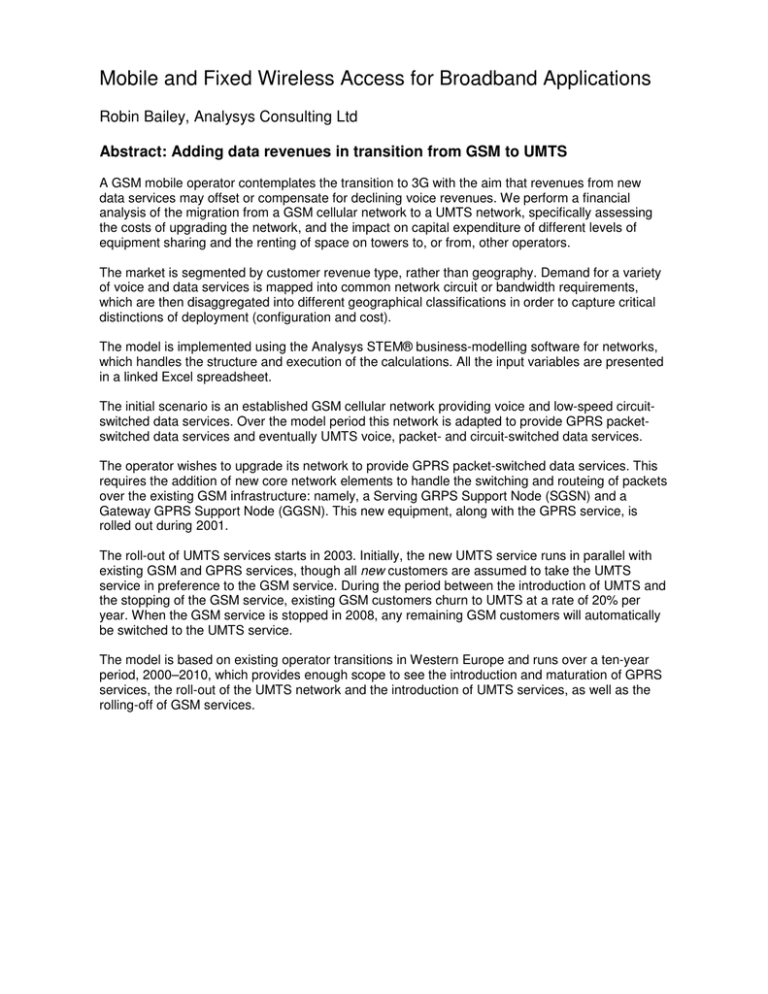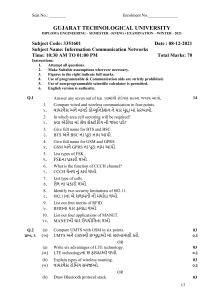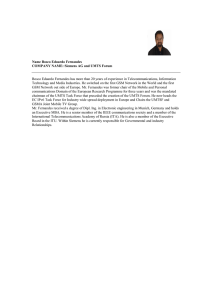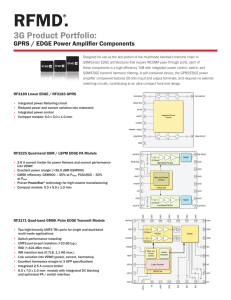Mobile and Fixed Wireless Access for Broadband Applications
advertisement

Mobile and Fixed Wireless Access for Broadband Applications Robin Bailey, Analysys Consulting Ltd Abstract: Adding data revenues in transition from GSM to UMTS A GSM mobile operator contemplates the transition to 3G with the aim that revenues from new data services may offset or compensate for declining voice revenues. We perform a financial analysis of the migration from a GSM cellular network to a UMTS network, specifically assessing the costs of upgrading the network, and the impact on capital expenditure of different levels of equipment sharing and the renting of space on towers to, or from, other operators. The market is segmented by customer revenue type, rather than geography. Demand for a variety of voice and data services is mapped into common network circuit or bandwidth requirements, which are then disaggregated into different geographical classifications in order to capture critical distinctions of deployment (configuration and cost). The model is implemented using the Analysys STEM® business-modelling software for networks, which handles the structure and execution of the calculations. All the input variables are presented in a linked Excel spreadsheet. The initial scenario is an established GSM cellular network providing voice and low-speed circuitswitched data services. Over the model period this network is adapted to provide GPRS packetswitched data services and eventually UMTS voice, packet- and circuit-switched data services. The operator wishes to upgrade its network to provide GPRS packet-switched data services. This requires the addition of new core network elements to handle the switching and routeing of packets over the existing GSM infrastructure: namely, a Serving GRPS Support Node (SGSN) and a Gateway GPRS Support Node (GGSN). This new equipment, along with the GPRS service, is rolled out during 2001. The roll-out of UMTS services starts in 2003. Initially, the new UMTS service runs in parallel with existing GSM and GPRS services, though all new customers are assumed to take the UMTS service in preference to the GSM service. During the period between the introduction of UMTS and the stopping of the GSM service, existing GSM customers churn to UMTS at a rate of 20% per year. When the GSM service is stopped in 2008, any remaining GSM customers will automatically be switched to the UMTS service. The model is based on existing operator transitions in Western Europe and runs over a ten-year period, 2000–2010, which provides enough scope to see the introduction and maturation of GPRS services, the roll-out of the UMTS network and the introduction of UMTS services, as well as the rolling-off of GSM services.



